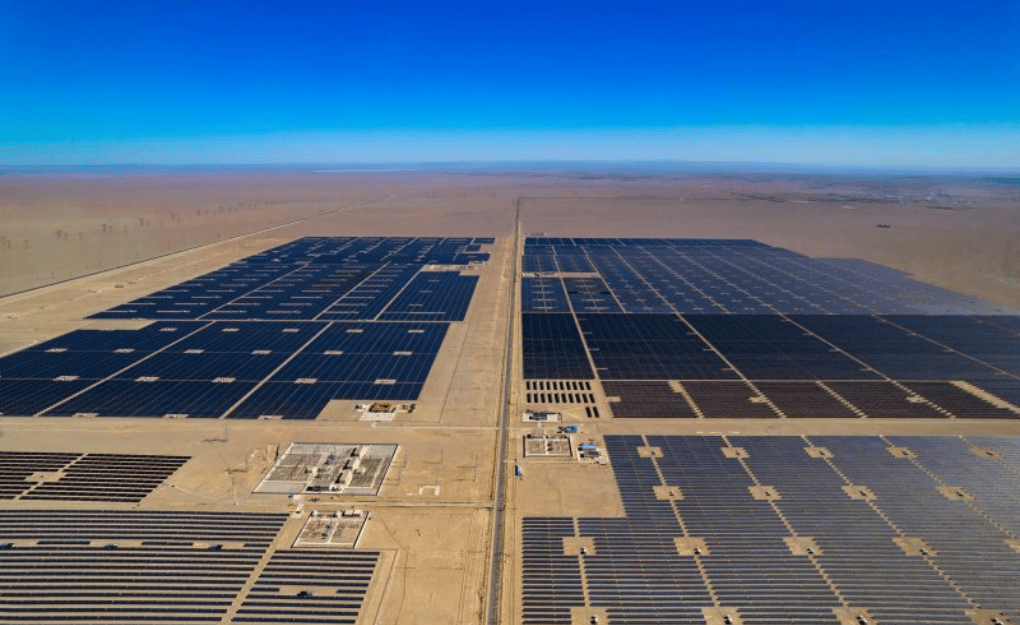Gorbea Solar Project marks a historic step in India’s clean energy journey. In July 2025, Union Minister Pralhad Joshi inaugurated the 435 MW solar power project in the Bikaner district of Rajasthan. Constructed in under eight months, the Gorbea project exemplifies India’s growing commitment to sustainable energy and its effort to meet climate targets while ensuring energy security for its vast population.
Project Overview: Speed, Scale, and Sustainability
Spanning 1,250 acres, the Gorbea Solar Project was commissioned under a 25-year Power Purchase Agreement (PPA) with the Solar Energy Corporation of India (SECI). Using Topcon Bifacial Mono PERC solar panels, the plant captures sunlight from both sides, increasing efficiency and energy output. Over 1,300 robotic cleaning units have been deployed to maintain the panels and ensure uninterrupted performance.
This technology-forward facility is designed to supply clean electricity to approximately 128,000 households annually and reduce carbon dioxide emissions by 705,000 tonnes. These figures highlight the project’s contribution to both social development and environmental conservation.
Rajasthan’s Renewable Powerhouse Status
With the addition of the Gorbea Solar Project, Rajasthan continues to lead India’s renewable energy revolution. As of mid-2025, the state generates about 70% of its total energy from renewable sources. The state’s installed renewable capacity stands at 35.4 GW, with 29.5 GW from solar and 5.2 GW from wind.
In 2024, Rajasthan introduced two ambitious policies — the Integrated Clean Energy Policy and the Green Hydrogen Policy. These have drawn in numerous investors and reinforced the state’s leadership in sustainable energy.
Economic and Environmental Impacts
The Gorbea project is not just about clean energy—it’s also a boost to the local economy. It generates 755 gigawatt-hours of electricity annually, lowering dependence on fossil fuels and enhancing the national grid with sustainable energy.
The environmental benefits are equally significant. A reduction of 705,000 tonnes of CO₂ annually contributes directly to India’s climate commitments under the Paris Agreement and its goal of achieving 50% of power capacity from non-fossil sources by 2030.
Additionally, local employment has received a boost, and farmers benefit from leasing land for solar infrastructure, generating steady income and diversifying revenue sources in arid regions like Bikaner.
Technological Innovation and Future Prospects
The project features cutting-edge solar tech and automation, underlining India’s push for innovation. Union Minister Pralhad Joshi, during the inauguration, stressed the need to adopt next-gen technologies like perovskite tandem solar cells, which offer even higher efficiency than the panels currently in use.
Rajasthan, with its high solar irradiance and vast land availability, is ideal for pilot projects of emerging solar innovations. Moreover, the state has an untapped wind energy potential of 284 GW, opening opportunities for hybrid wind-solar projects, further strengthening grid stability and energy availability.
Government Schemes and Renewable Energy Investments
The government has aggressively pushed for solar adoption at multiple levels:
- Under the Pradhan Mantri Surya Ghar Yojana, over 49,000 rooftop solar systems have been installed across Rajasthan.
- Subsidies worth ₹325 crore have been distributed to encourage household solar adoption.
- Over 145,000 solar pumps have been deployed under the PM-KUSUM scheme, improving irrigation access while reducing diesel consumption in agriculture.
Rajasthan attracted investment proposals worth ₹6.57 lakh crore, with the bulk directed toward renewable energy and green hydrogen. Despite this success, implementation lags in rooftop solar adoption due to pending applications, indicating room for policy refinement and execution speed.
Conclusion: A Model for India’s Clean Energy Transition
The Gorbea Solar Project is more than a solar park — it is a symbol of India’s energy transition. By combining advanced technology, policy innovation, and community benefit, the project sets a precedent for other states and countries aiming to adopt large-scale clean energy solutions.
As India accelerates toward its net-zero emission goals, such landmark projects prove that clean energy is not only possible but also scalable and economically viable. Rajasthan’s leadership, both in infrastructure and policy, continues to light the way forward.




